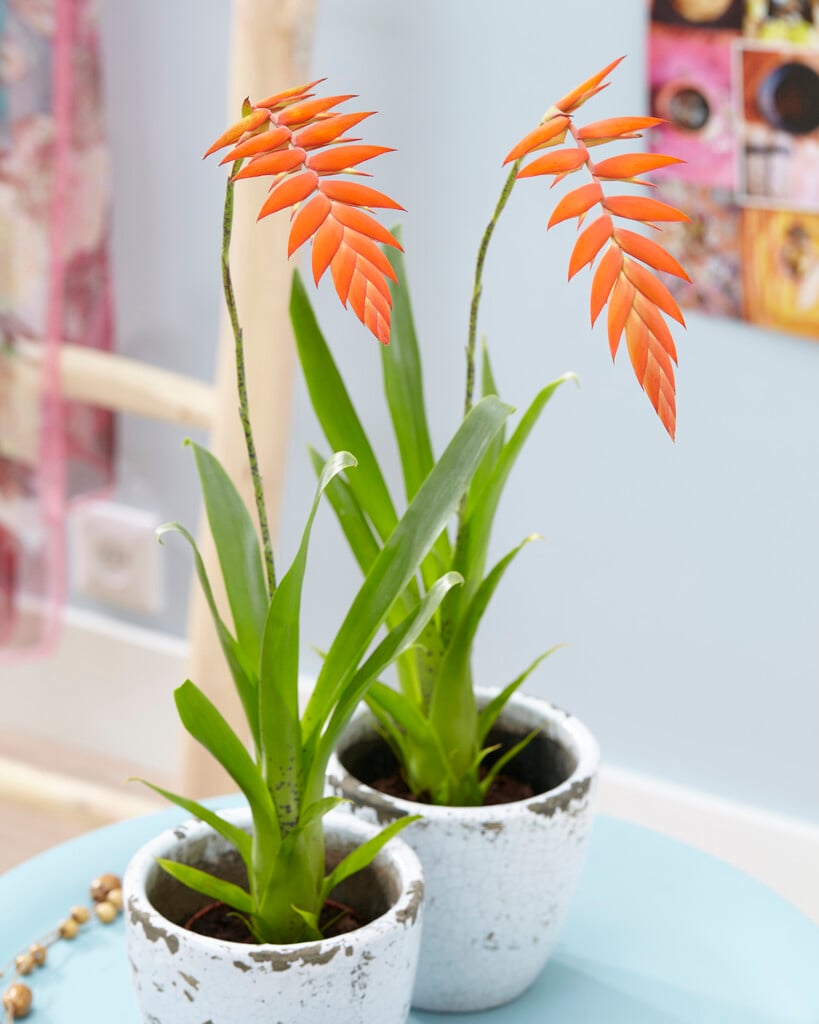Tillandsia dyeriana
An epiphytic perennial bromeliad to 35cm tall, with funnel-shaped rosettes of tongue-shaped, pointed leaves with reddish-brown spots. In summer it produces a flowerspike composed of long-lasting, waxy, red bracts from which emerge tubular white flowers

Buy this plant
Size
Ultimate height
0.1–0.5 metresTime to ultimate height
5–10 yearsUltimate spread
0.1–0.5 metresGrowing conditions
Moisture
Well–drainedpH
Acid, NeutralColour & scent
| Stem | Flower | Foliage | Fruit | |
| Spring | Green | |||
|---|---|---|---|---|
| Summer | Red White | Green | ||
| Autumn | Green | |||
| Winter | Green |
Position
- Partial shade
Aspect
East–facing or South–facing or West–facing
Exposure
Sheltered Hardiness
H1CBotanical details
- Family
- Bromeliaceae
- Native to GB / Ireland
- No
- Foliage
- Evergreen
- Habit
- Tufted
- Genus
Tillandsia are evergreen perennials, often epiphytic, forming rosettes of leathery, linear or strap-shaped leaves, and tubular or funnel-shaped flowers which may be 2-ranked in spikes with conspicuous bracts, or solitary and inconspicuous
- Name status
Correct
- Plant range
- NW Ecuador
How to grow
Cultivation
Under glass, grow epiphytically, or in pots of free-draining compost composed of equal parts of orchid compost, perlite and coir fibre. Position in bright, indirect light, with moderate to high humidity. From late spring to late summer water moderately and apply a balanced foliar feed monthly. Water sparingly in winter. See Air plants cultivation
Propagation
Propagate by seed sown at 27°C in spring, onto bundles of conifer twigs and sphagnum moss; mist daily. Detach offsets in spring
Suggested planting locations and garden types
- Houseplants
- Conservatory and greenhouse
Pruning
No pruning required
Pests
Generally pest-free
Diseases
Generally disease-free
Get involved
The Royal Horticultural Society is the UK’s leading gardening charity. We aim to enrich everyone’s life through plants, and make the UK a greener and more beautiful place.